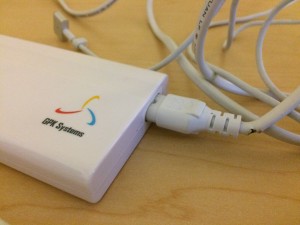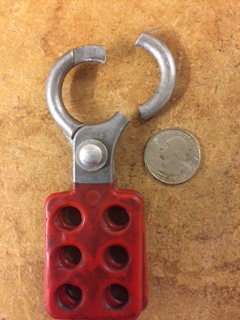
A GPK Systems (after market, non-NRTL) MacBook power adapter was plugged in to a 120-Volt outlet when it began to flame and smoke. The adapter was unplugged, stopping the fire, but leaving soot on the table.
The stress point on the cord appears to have weakened the wire, causing heat to build up and eventually caused a fire.
Download Safety Alert 2015-005: Non-NRTL MacBook Power Adapter Catches Fire

 The blade sticking out of the pictured outlet is from a power adapter that was powering an Apple (Mac) laptop, plugged into a 120-Volt outlet. When the user, a Network Engineer, attempted to unplug the power adapter from the outlet, the blade in the “hot” side of the outlet broke free of the power adapter and remained in the outlet.
The blade sticking out of the pictured outlet is from a power adapter that was powering an Apple (Mac) laptop, plugged into a 120-Volt outlet. When the user, a Network Engineer, attempted to unplug the power adapter from the outlet, the blade in the “hot” side of the outlet broke free of the power adapter and remained in the outlet.
